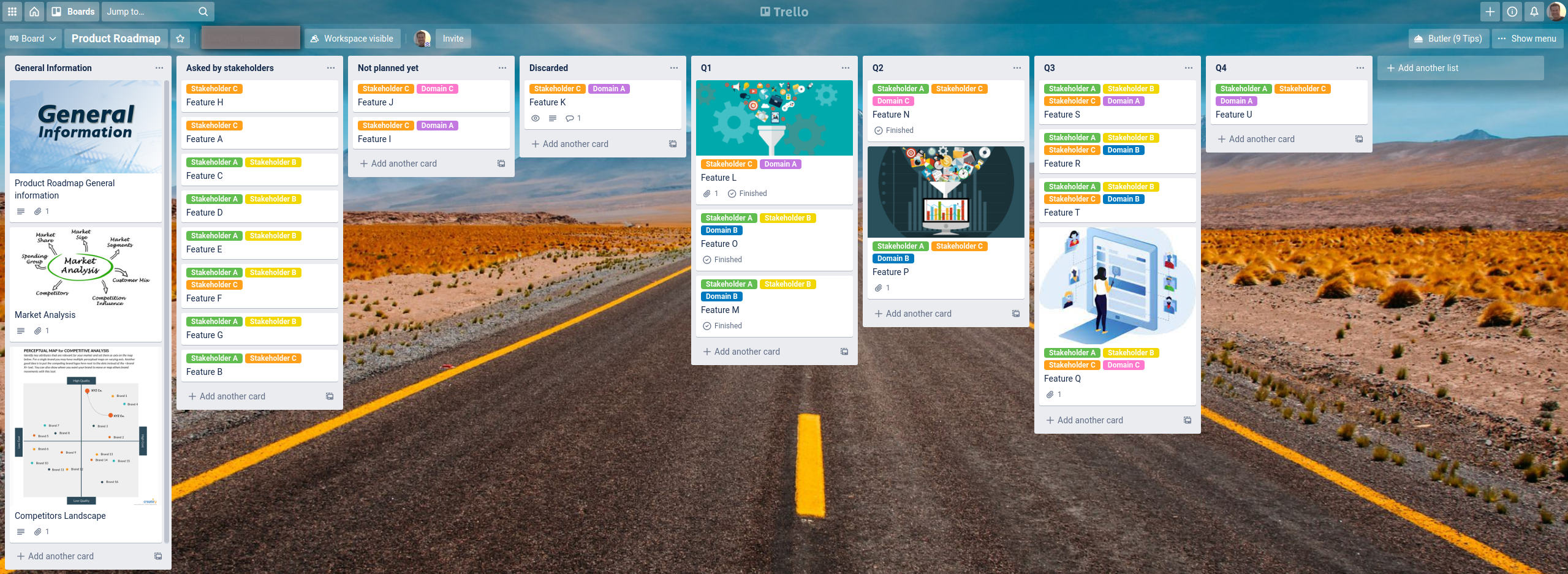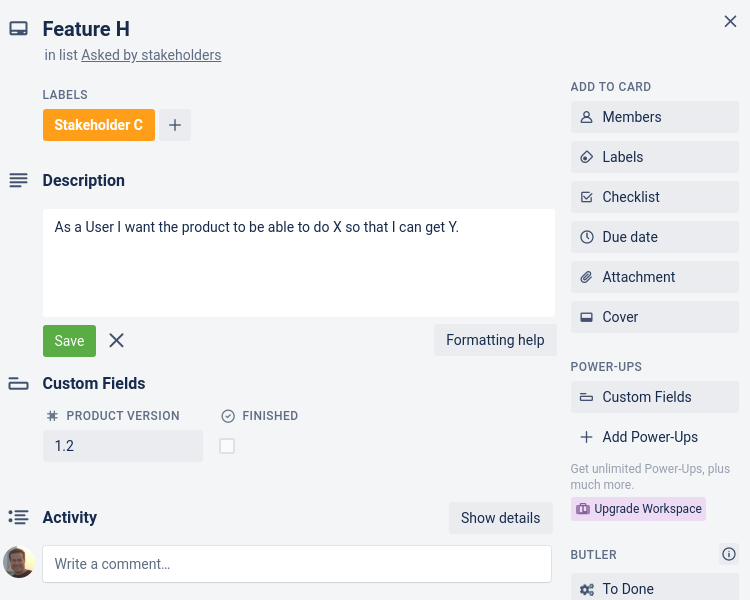How to manage your roadmap with Trello
 photo by Jaromír Kavan
photo by Jaromír Kavan
IntroductionPermalink
As Product Manager or Product Owner, one of the most important things to do is to keep your product’s roadmap updated with the features asked by the stakeholders, correctly described and prioritized. There are several tools to keep that roadmap up to date, from the typical and still very in use Power Point presentation to those tools specifically designed for that task [1].
I am currently using Jira to manage the backlog and the roadmap of the product I work on, as it is the official tool within the company, but it wasn’t that way when I was commissioned as Product Owner (PO) to start one of the new products tree years ago. Some POs used Excel sheets to handle the Product Backlog and others used PowerPoint presentations for the Product’s roadmap. At that time I had been contributing to the Opendaylight open source project for two years and we had been using Trello successfully to synchronize the activity of a quite disperse team, so I decided to keep using it and to build a board that allowed me to maintain the product’s roadmap.
The boardPermalink
This is how it looks like:

As most product roadmaps it has four columns, one for each quarter (Qx). There is a card for every feature and four additional columns with this functions:
-
General information: this column is useful to holds context information to understand the roadmap itself (how to interpret labels, colors, etc.) or any other document to understand the product’s context, for example:
- Product vision: the product vision statement, describes the overarching long-term mission of your product. Vision statements are aspirational and communicate concisely where the product hopes to go and what it hopes to achieve in the long term.
- Product mission: a product’s mission is a clear, concise statement that explains the product’s highest-level purpose.
- Product strategy: a product strategy is a high-level plan that defines your product goals throughout its life cycle and how it will support the organization’s goals
- Market analysis: it is good to have the market analysis document attached as a card to help to refine features, etc.
- Competitors: it is good to have one or more cards with information about competitors to compare our product’s features with others’.
-
Added by stakeholders: this is the column where the PO adds all the features requested by the stakeholders (customers, product management, team, etc.). One card per feature, those cards can be just an slogan or can be much more elaborated as we work on them to expand them with more accurate information, diagrams, examples, links to similar features from other products, etc. It is useful to define a label for each stakeholder to track who asked for it and when.
-
Not planned yet: the features go into this column once they have a sufficient level of detail but we still do not know when they will be delivered.
-
Discarded: after some analysis, some features might be no longer needed or they can be superseded by others, etc.
The cardsPermalink
The following is a basic setup for a feature card:

- Name: descriptive name for the feature, we can evan use an identifier as well to ease the search, i.e. [F-XXX].
- Description: it has to contain at least a message in the form of User Story (as a User I want/need the product to be able to do X so that I can get Y).
-
Images: an image is worth a million words, so if you can draw even a basic schema of the design, it can help a lot for others to understand what the feature is supposed to work.
-
Custom fields: custom fields is a Trello power-up that allows to customize the fields shown within a card, so for example we can add:
- Finished: checkbox to show wether the feature is released or not.
- Product version: it is useful to specify a tentative version in which the feature is planned to be released.
- Priority: it can be useful to have a field showing the priority (low, medium, high), although the position in the stack (the column) should be the priority itself, the higher the position the higher the priority.
-
Labels: we can create as many labels as we need, but the following I think are a must. Trello has the ability to filter by label and this will help us a lot to see different views of the roadmap, for example: show me the status of the features asked by the stakeholder X.
- Stakeholder: one label identifying which stakeholder asked the feature.
- Domain: a domain label is a way to group features that share similar characteristics, for example: user login, shopping card, statistics, monitoring, etc.
How does it work?Permalink
As said before, for every feature there is a card, it is important to create a card for every little idea that arise anywhere and at anytime, do not discard any feature from the very beginning, you’ll have plenty of time once it evolves along the board. This way we overcome the first instinct to discard those ideas that are not mature enough or not well described.
The feature cards should land on the Asked by stakeholders column, there can be as a first stop to be further detailed, discussed and prioritized. Let’s keep in mind that this Roadmap should be public and shared with stakeholders so they can collaborate to its definition, we can enrich every card with comments, pictures, links and documents until it is ready to be planned, then it goes to the Not planned yet column or even to the Discarded column.
Once we have a suitable quarter or product version to include the feature will go to that column. Of course, a feature card can be updated at any time, that’s the beauty of having this kind of board to handle the roadmap instead of a more static format, as PowerPoint presentation. Once the product implement the feature you can mark the checkbox, this way you can have a picture on what is done and what is left.
ConclusionsPermalink
Handling your product’s roadmap with a Trello board (or similar tools [1]) it is not only more convenient and dynamic, but also is a way to show real agility, transparency with your stakeholders and, let’s say it fun :)
When I started to use it, not many companies published their roadmaps, but nowadays there are quite a lot:



